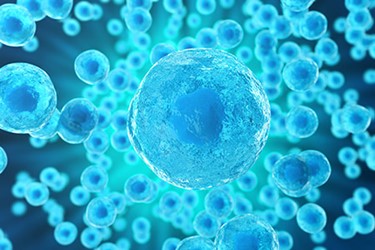Inside Carisma Therapeutics' CAR-M Study

By Erin Harris, Editor-In-Chief, Cell & Gene
Follow Me On Twitter @ErinHarris_1

Carisma Therapeutics recently announced that Nature Biotechnology has published a study from the Perelman School of Medicine at the University of Pennsylvania demonstrating Carisma's foundational technology evaluating the potential of human chimeric antigen receptor macrophages (CAR-M) for cancer immunotherapy. According to Carisma, the preclinical findings indicate that CAR-M therapy could overcome the key challenges that cell therapies have encountered with solid tumors — limited trafficking to the tumor site, an immunosuppressive tumor microenvironment, and the heterogeneous expression of tumor-associated antigens.
Upon the release of Carisma Therapeutics’ news, I caught up with Michael Klichinsky, Ph.D. co-founder and VP of discovery and research at Carisma Therapeutics for more information about the groundbreaking CAR-M study. Here’s what he had to say.
What do the results of the CAR-Ms study mean for cell therapy overall and why?
The human immune system is composed of two parts: innate and adaptive. The innate immune system is the first responder against infectious pathogens, recognizing pathogens, eliminating them through phagocytosis (and other methods), and alarming the adaptive immune system to the invader. The adaptive immune system, in turn, amplifies the response and finishes the job, establishing immune memory in the process.
T cell-based cancer therapies, such as chimeric antigen receptors (CAR)-T cells, redirect the activity of T cells against tumor associated antigens that are on the cell surface. The CAR-T approach has been successful in the setting of hematologic malignancies like leukemia, but solid tumors like breast and gastric cancer have proven difficult. Given the ability of innate immune cells to mount potent immune responses, we hypothesized that engineering macrophages (M) – the sentinel immune cell of the innate immune system – may be a promising approach to overcoming solid tumors.
We demonstrated, for the first time, the efficient engineering of primary human macrophages with a CAR. Toward that goal, we had to identify a viral vector capable of engineering macrophages with high efficiency, as macrophages are resistant to most of the commonly used viral vectors in the space (lentivirus and retrovirus). We found that Ad5f35 lead to efficient macrophage transduction and as a bonus, triggered an M1 pro-inflammatory/anti-tumor phenotype onto the CAR macrophages (which we termed CAR-M).
We showed that these CAR-M could phagocytose tumor cells in a targeted fashion, leading to their destruction. Additionally, the CAR-M were shown to infiltrate solid tumors, reprogram the surrounding tumor microenvironment toward pro-inflammatory, reduce tumor burden through phagocytosis, present antigens to the adaptive immune system (T cells in particular) and increase overall survival in animal models of solid tumors.
Ultimately, CAR-M technology engages with the body’s adaptive immune system to outsmart solid tumors and given the promising results thus far, a solution may be on the horizon for patients. Our findings leave open the possibility for combination therapy in the future with other agents that play a role in cell death pathways or T cell-based immunity.
Given the unique role macrophages play in the immune system, there are multiple opportunities to apply this technology to additional disease areas, such as neurodegeneration, inflammatory disorders, and fibrosis.
What challenges does the sector face regarding solid tumors?
In recent years, it has become clear that CAR-T cells are very good at killing hematologic malignancies (for example, B-cell acute lymphoid leukemia and B-cell non-Hodgkin lymphomas) in patients, but they have a hard time against solid tumors.
The three key challenges in targeting solid tumors include trafficking, immunosuppression, and antigen heterogeneity. Our data shows that macrophages have the unique potential to overcome these challenges because: (i) macrophages are actively recruited to solid tumors, while other immune cells are often actively excluded, (ii) CAR-M are M1 polarized and rather than being corrupted by the suppressive factors of the TME, they exert a ‘warming’ effect on the TME, and (iii) macrophages are professional antigen presenting cells, capable of priming a broad adaptive immune response against the tumor.
How might Carisma’s study address these challenges?
The preclinical findings from the study indicate that CAR-M therapy could overcome the key challenges that cell therapies have encountered with solid tumors – limited trafficking to the tumor site, an immunosuppressive tumor microenvironment, and the heterogeneous expression of tumor-associated antigens.
In contrast to solid tumors, Carisma’s CAR-Ms can actively traffic to the tumor, selectively kill tumor cells through phagocytosis (the term for ‘eating’ a cell), “warm up” the tumor microenvironment (for other immune actions to successfully take place), and trigger a vaccine effect by activating the patient’s intrinsic immunity.
What are Carisma’s next steps?
We are working toward a future IND filing and developing operational plans with key partners to initiate a Phase I clinical trial evaluating CT-0508, a HER2 targeted CAR-M. This is the first time an engineered macrophage will be used in a clinical trial.
